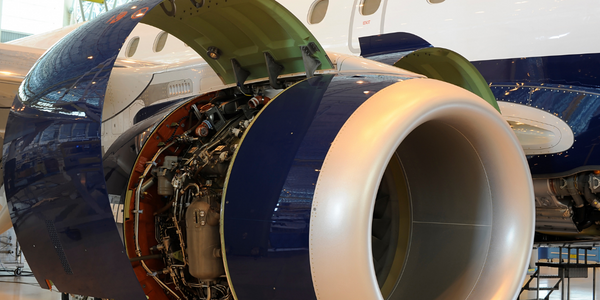Technology Category
- Drones - Multirotor Drones
- Sensors - Gyroscopes
Applicable Industries
- Aerospace
- Education
Applicable Functions
- Procurement
- Product Research & Development
Use Cases
- Smart Campus
- Virtual Prototyping & Product Testing
Services
- System Integration
About The Customer
The customer in this case study is Christopher Van Damme, a senior undergraduate student within the Department of Engineering Mechanics at the University of Wisconsin-Madison. He was working on a senior design project involving the design and analysis of a coaxial rotor craft. Specifically, he was tasked with analyzing a composite-made helicopter rotor blade. To accomplish this, he had to employ Computer-Aided Engineering tools to cover the required studies regarding static, modal, frequency response, and dynamic analysis of the rotor. The University of Wisconsin-Madison is known for its core strengths across engineering disciplines, reflecting its history of innovation and a tremendous opportunity. The faculty strongly supports collaboration structures across disciplinary boundaries, including departments such as healthcare, energy, advanced manufacturing, and materials innovation.
The Challenge
The case study revolves around a senior design project undertaken by Christopher Van Damme, a senior undergraduate student in the Department of Engineering Mechanics at the University of Wisconsin-Madison. The project involved the design and analysis of a coaxial rotor craft, specifically focusing on a composite-made helicopter rotor blade. Rotor blades are critical components of helicopters, providing thrust, lift, and enabling maneuvers. Modern helicopters use rotor blades made of composite material due to their excellent strength-to-weight ratio, damage tolerance, and fatigue life. However, composite material is challenging to compute using analytical methods or reduced order models. Therefore, Van Damme had to apply suitable Computer-Aided Engineering (CAE) tools to cover the required studies, including static, modal, frequency response, and dynamic analysis of the rotor.
The Solution
To analyze the composite-made rotor blades, Van Damme used Altair's HyperWorks suite. The rotor blade was initially designed within a 3D CAD package and then imported into HyperMesh for preprocessing tasks such as geometry editing and mesh generation. HyperMesh facilitated a quick and streamlined process, enabling full 3D finite element modeling for an accurate representation of the rotor blade's response. The rotor hub and rotor blades, which critically influence the aircraft's performance, were of particular interest in the analysis. The 3D CAD model was imported into HyperMesh as separate solid parts, converted to surfaces for shell meshing, and prepared for a composite structure analysis. The rotor blade's root, where the highest stress occurs, was meshed as 3D solids representing the material properties of a continued ply layup through the thickness of the airfoil. The aerodynamic loads were applied at discrete points along the rotor's length for lift and drag. The design used an articulated or rigid connection, with the blade root constrained by two titanium lugs, acting as constraints within the model.
Operational Impact

Case Study missing?
Start adding your own!
Register with your work email and create a new case study profile for your business.
Related Case Studies.

Case Study
Airbus Soars with Wearable Technology
Building an Airbus aircraft involves complex manufacturing processes consisting of thousands of moving parts. Speed and accuracy are critical to business and competitive advantage. Improvements in both would have high impact on Airbus’ bottom line. Airbus wanted to help operators reduce the complexity of assembling cabin seats and decrease the time required to complete this task.

Case Study
Aircraft Predictive Maintenance and Workflow Optimization
First, aircraft manufacturer have trouble monitoring the health of aircraft systems with health prognostics and deliver predictive maintenance insights. Second, aircraft manufacturer wants a solution that can provide an in-context advisory and align job assignments to match technician experience and expertise.

Case Study
Aerospace & Defense Case Study Airbus
For the development of its new wide-body aircraft, Airbus needed to ensure quality and consistency across all internal and external stakeholders. Airbus had many challenges including a very aggressive development schedule and the need to ramp up production quickly to satisfy their delivery commitments. The lack of communication extended design time and introduced errors that drove up costs.

Case Study
Developing Smart Tools for the Airbus Factory
Manufacturing and assembly of aircraft, which involves tens of thousands of steps that must be followed by the operators, and a single mistake in the process could cost hundreds of thousands of dollars to fix, makes the room for error very small.

Case Study
Accelerate Production for Spirit AeroSystems
The manufacture and assembly of massive fuselage assemblies and other large structures generates a river of data. In fact, the bill of materials for a single fuselage alone can be millions of rows of data. In-house production processes and testing, as well as other manufacturers and customers created data flows that overwhelmed previous processes and information systems. Spirit’s customer base had grown substantially since their 2005 divestiture from Boeing, resulting in a $41 billion backlog of orders to fill. To address this backlog, meet increased customer demands and minimize additional capital investment, the company needed a way to improve throughput in the existing operational footprint. Spirit had a requirement from customers to increase fuselage production by 30%. To accomplish this goal, Spirit needed real-time information on its value chain and workflow. However, the two terabytes of data being pulled from their SAP ECC was unmanageable and overloaded their business warehouse. It had become time-consuming and difficult to pull aggregate data, disaggregate it for the needed information and then reassemble to create a report. During the 6-8 hours it took to build a report, another work shift (they run three per day) would have already taken place, thus the report content was out-of-date before it was ever delivered. As a result, supervisors often had to rely on manual efforts to provide charts, reports and analysis.




